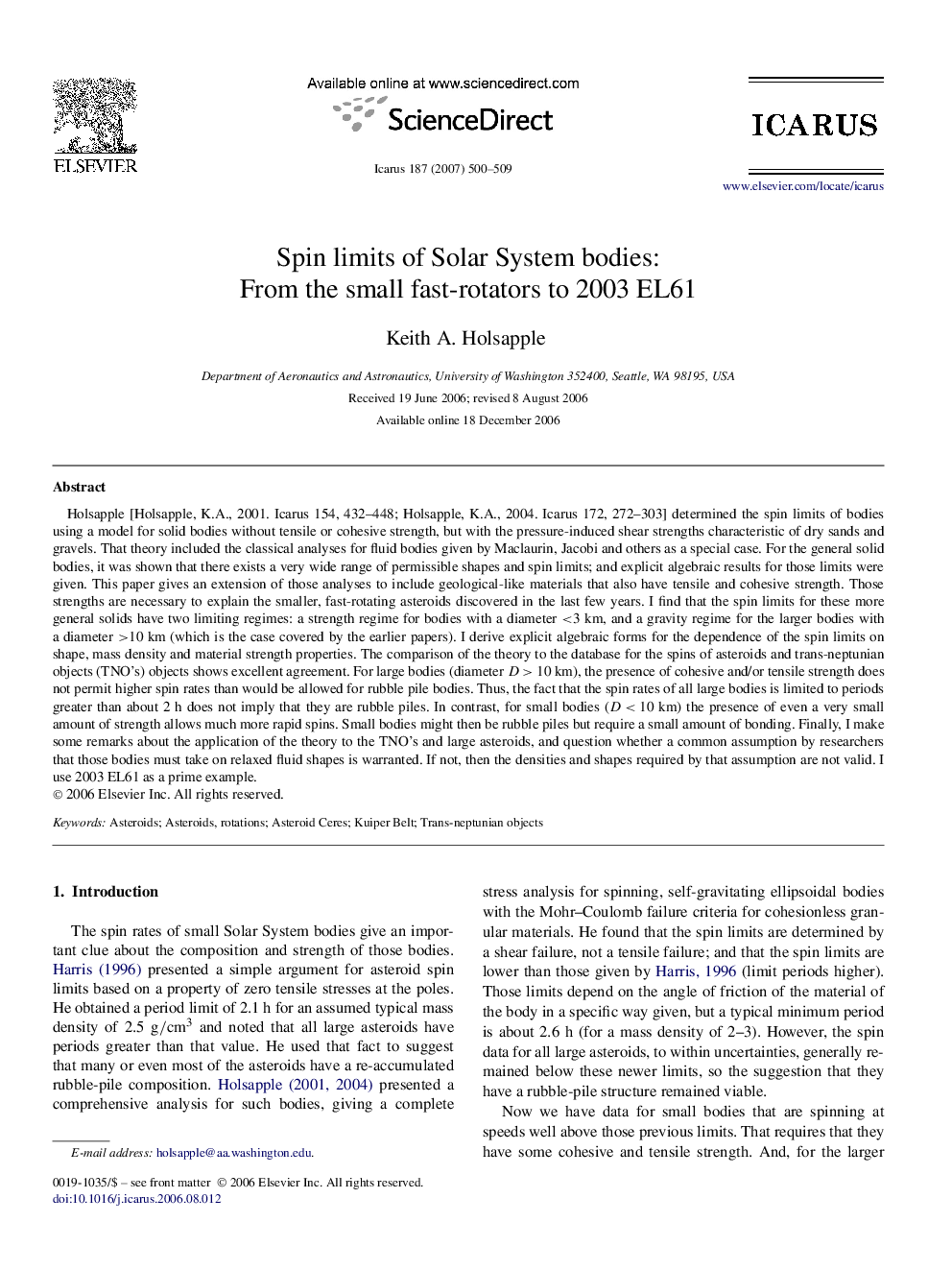| کد مقاله | کد نشریه | سال انتشار | مقاله انگلیسی | نسخه تمام متن |
|---|---|---|---|---|
| 1775424 | 1021193 | 2007 | 10 صفحه PDF | دانلود رایگان |

Holsapple [Holsapple, K.A., 2001. Icarus 154, 432–448; Holsapple, K.A., 2004. Icarus 172, 272–303] determined the spin limits of bodies using a model for solid bodies without tensile or cohesive strength, but with the pressure-induced shear strengths characteristic of dry sands and gravels. That theory included the classical analyses for fluid bodies given by Maclaurin, Jacobi and others as a special case. For the general solid bodies, it was shown that there exists a very wide range of permissible shapes and spin limits; and explicit algebraic results for those limits were given. This paper gives an extension of those analyses to include geological-like materials that also have tensile and cohesive strength. Those strengths are necessary to explain the smaller, fast-rotating asteroids discovered in the last few years. I find that the spin limits for these more general solids have two limiting regimes: a strength regime for bodies with a diameter <3 km, and a gravity regime for the larger bodies with a diameter >10 km (which is the case covered by the earlier papers). I derive explicit algebraic forms for the dependence of the spin limits on shape, mass density and material strength properties. The comparison of the theory to the database for the spins of asteroids and trans-neptunian objects (TNO's) objects shows excellent agreement. For large bodies (diameter D>10 kmD>10 km), the presence of cohesive and/or tensile strength does not permit higher spin rates than would be allowed for rubble pile bodies. Thus, the fact that the spin rates of all large bodies is limited to periods greater than about 2 h does not imply that they are rubble piles. In contrast, for small bodies (D<10 kmD<10 km) the presence of even a very small amount of strength allows much more rapid spins. Small bodies might then be rubble piles but require a small amount of bonding. Finally, I make some remarks about the application of the theory to the TNO's and large asteroids, and question whether a common assumption by researchers that those bodies must take on relaxed fluid shapes is warranted. If not, then the densities and shapes required by that assumption are not valid. I use 2003 EL61 as a prime example.
Journal: Icarus - Volume 187, Issue 2, April 2007, Pages 500–509